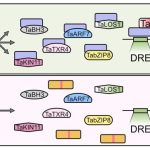How Researchers Handle Work-Life Balance
Work-life balance, especially for careers in science, is more challenging than it sounds. Maintaining a balance between work and life represents a culmination of patience, self-discipline, and boundary-setting. It is common for researchers to suffer from mental health issues due to working significantly longer-than-normal working hours without making satisfactory progress. A 2022 Nature survey found that 70% of graduate students work more than 40 hours per week, and that 68% have difficulty maintaining a good work-life balance (Woolston, 2022). And, according to Nature’s 2021 salary and Job survey, nearly half (45%) of scientists across all career stages reported signs of burnout and overwork (Woolston, 2021).
Although organizational skills are crucial if you choose to start a career in science (Bartlett et al, 2021), many days it is impossible to work only eight hours or to avoid work on some weekends. To an extent, this is acceptable in a field like biological sciences where we work with living organisms. However, devoting seven days a week frequently might result in researchers’ having mental health struggles like anxiety, burnout syndrome, and depression (Powell, 2016). It has been observed that students in academia are particularly affected by mental health issues due to uncertainty in their future jobs, and the need to obtain results that can be published (Powell, 2017).
Many young researchers find it difficult to have an active life outside the lab because they sacrifice their free time to meet the demands of the next experiment planned, an upcoming conference, or to work on a paper. However, disconnecting from work will increase creativity and productivity at the workplace. Many scientists say that their leisure time improves their research by boosting their confidence, sharpening their minds, and releasing stress.
Family obligations, together with scientific research and teaching, have taken a toll on the mental health of academic mothers and female scientists who wish to create a family. Women shoulder more of the childcare responsibilities in a family (Cohut, 2017), and one cannot be brilliant at taking care of everything at the same time if the family load is not equally shared. This unbalanced situation, paired with the demands of a career in scientific research, may lead to women developing mixed feelings about pursuing scientific research as a career. In a recent study on a time-use survey of 19,905 academics, it was found that all academic parents reported a reduction in time spent on research per day (Deryugina, 2021). This reduction of time spent on research is greater for academic mothers than fathers, especially during the Covid-19 pandemic.
The common solutions that could be taken to ease work-life balance could be:
- Improve organizational skills.
- Take short breaks from daily bench work in the laboratory.
- Set boundaries to have free time to develop our leisure activities.
- Try not to schedule work during the weekends unless it is necessary.
- Socialize and have a support network of either friends with different work backgrounds or family.
- Fight for our rights. Better scholarships, longer and fair maternity leaves, flexible schedules, and sometimes improving mental health is just a matter of improving work conditions.
Supervisors are key to encouraging healthy work-life balance in the lab by promoting self-care habits among their mentees and being role models themselves. Support systems for care-giver parents, especially women in academic science, need to be prioritized by institutions and agencies so that they continue to have a thriving, diverse workforce in place. Such practices of compassion, care, and equity will eventually lead to a healthy work-life balance for many.
References
- Bartlett MJ, Arslan FN, Bankston A, Sarabipour S. 2021. Ten simple rules to improve academic work-life balance. PLoS Comput Biol. 17(7):e1009124. doi:10.1371/journal.pcbi.1009124. http://dx.doi.org/10.1371/journal.pcbi.1009124.
- Cohut M. 2017 Oct 10. Women “spend more time on housework, childcare than men.” Medical News Today. [accessed 2023 Feb 6]. https://www.medicalnewstoday.com/articles/319687.
- Deryugina T, Shurchkov O, Stearns J. 2021. COVID-19 disruptions disproportionately affect female academics. Cambridge, MA: National Bureau of Economic Research.
- Powell K. 2016. Young, talented and fed-up: scientists tell their stories. Nature. 538(7626):446–449. doi:10.1038/538446a. [accessed 2023 Feb 6]. https://www.nature.com/articles/538446a.
- Powell K. 2017. Work–life balance: Break or burn out. Nature. 545(7654):375–377. doi:10.1038/nj7654-375a. [accessed 2023 Feb 6]. https://www.nature.com/articles/nj7654-375a.
- Woolston C. 2021. How burnout and imposter syndrome blight scientific careers. Nature. 599(7886):703–705. doi:10.1038/d41586-021-03042-z. [accessed 2023 Feb 6]. https://www.nature.com/articles/d41586-021-03042-z.
- Woolston C. 2022. Stress and uncertainty drag down graduate students’ satisfaction. Nature. 610(7933):805–808. doi:10.1038/d41586-022-03394-0. [accessed 2023 Feb 6]. https://www.nature.com/articles/d41586-022-03394-0.
______________________________________________
About the Authors:
Indrani Kakati is a postdoctoral researcher mother and a 2023 Plantae Fellow, wishing to connect with researchers around the globe and impart knowledge through communicating innovative research and wants to inspire and motivate young girls to take up science and never give up. You can find her on Twitter at @indranikb.
Eva Maria Gomez Alvarez is a PhD student in Agrobiodiversity working in Italy and a 2023 Plantae Fellow. She studies cereal genetics and microbiome, and during her free time, she likes to play the flute, run and read feminist books. You can find her on Twitter at @eva_ga96.



